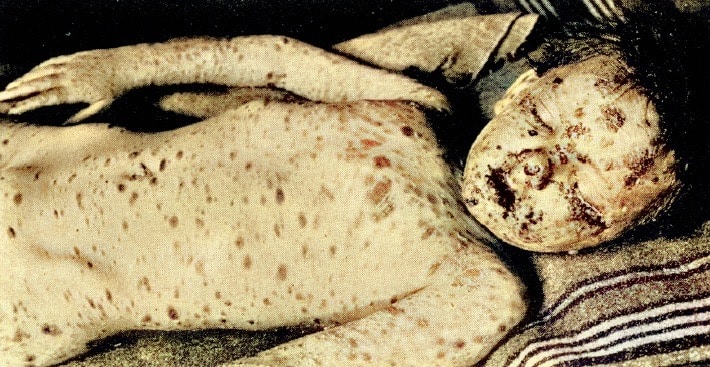Albert Stevens

Albert Mason Stevens (1884-1945) was an American surgeon.
Born in India in 1884, Stevens moved to the USA and was awarded a Rhodes Scholarship in 1905.
He obtained his Doctor of Medicine from Columbia University in 1915, after which worked as an assistant surgeon in the trenches in France during World War I.
He resided the rest of his life in the United States where he worked as a surgeon, eventually retiring in 1934 to pursue other passions including fruit growing, teaching and writing.
Along with Frank Chambliss Johnson (1894 – 1934), Stevens is eponymously affiliated with Stevens-Johnson syndrome
Biography
- Born in Rangoon, India in 1884: The son of a Christian missionary
- 1894 – Moved to the United States of America
- 1905 – Bachelor of Arts Degree, Yale University
- 1908 – Rhodes Scholarship, Balliol College Oxford University
- 1915 – Doctor of Medicine from College of Physicians and Surgeons, Columbia University
- World War I – served as an assistant surgeon, where he was captured by the Germans and repatriated to the US when the war was over
- Worked at Bellevue Hospital, New York City
- 1922 – First documented cases of ‘A new eruptive fever in children associated with stomatitis and opthalmia’ alongside colleague Frank Johnson
- 1934 – Retired to Hawaii to grow tropical fruit and teach in the Hawaiian school system
- Died on August 6, 1945
Medical Eponyms
Stevens-Johnson syndrome (1922)
Stevens-Johnson syndrome is an immunological skin condition, often secondary to drugs or infection. Initial presentation is usually a feverish prodromal period followed by a blistering erythematous skin condition – characterised by mucous membrane involvement
Stevens and Frank Chambliss Johnson (1894 – 1934) and were the first to draw attention to the conjunctival involvement of the syndrome which was the distinguishing feature at that time
In 1922 Stevens and Johnson published the case reports of two boys aged 7 and 8 at Bellevue hospital, New York. This report was also published later that year in the Lancet. “A New Eruptive Fever Associated with Stomatitis and Ophthalmia” in children. They could find no description of a similar cutaneous eruption and thought that no known diagnosis could be made from the symptoms and course of the disease.

Two cases have been observed of a generalized cutaneous eruption, not conforming to any recognized dermatologie condition. Both cases occurred in boys, one aged 7, the other 8, coming from widely separated parts of New York City, with no possibility of contact. Both cases manifested a purulent conjunctivitis, in Case 2 going on to panophthalmitis and total loss of vision, and in Case 1 responding to treatment, but leaving a severe corneal scar. The pus showed pyogenic organisms only; no gonococci.
Stevens and Johnson. 1922
Major Publications
- Stevens AM, Johnson FC. A new eruptive fever associated with stomatitis and ophthalmia: report of two cases in children. Am J Dis Child. 1922; 24(6): 526-533.
- Stevens AM, Johnson FC. A New Eruptive Fever. The Lancet. 1922; 200(5183): 1396
- Stevens AM. The Nursery Rhyme: Remnant of Popular Protest. Coronado Press, 1968.
Controversies
- Albert Mason Stevens is most commonly recorded as a pediatrician – however, he was a surgeon
- For his first year of medical school Stevens turned down a scholarship of $125 a year ($4000 US today), asking that it was presented to another student more in need of the money.
Interesting Facts
In the early 1930s, Stevens wrote a manuscript titled “Hidden History in Nursery Rhymes”, detailing historical references that could be found in many popular British nursery rhymes from the time. He concluded that many were written as political commentary, with double meanings embedded within to guard against punishment for libel or treason. This work was eventually published after his death in 1968 under the title “The Nursery Rhyme: Remnant of Political Protest”.
References
Biography
- Ström J. Männen bakom syndromet: albert stevens och frank johnson. Först att beskriva “okänd infektionssjukdom”–allergi utlöst av läkemedel eller infektion [The men behind the syndrome: Albert Stevens and Frank Johnson. First to describe an unknown infectious disease allergy caused by drugs or infection]. Lakartidningen. 1983 Mar 16;80(11):1076-7. Swedish
- Bibliography. Stevens, Albert Mason 1884-1945. WorldCat Identities
Eponymous terms
- Bohigian, George M. The history of Stevens-Johnson Syndrome and a case study. St. Louis: Center for History of Medicine at Washington University School of Medicine, 2015
- American Antiquarian Society Manuscript Collection. Stevens, Albert Mason, “Hidden History in Nursery Rhymes,” c.1930. Published 31 March 1977.
[cite]
BSc, MD from University of Western Australia. Junior Doctor currently working at Sir Charles Gairdner Hospital.

